Sourdough Pie Crust
Sourdough Pie Crust, where have you been all my life? This pie crust is tender, flaky and tastes amazing. This just might become your go-to pie crust recipe. This recipe uses an entire cup of sourdough discard.
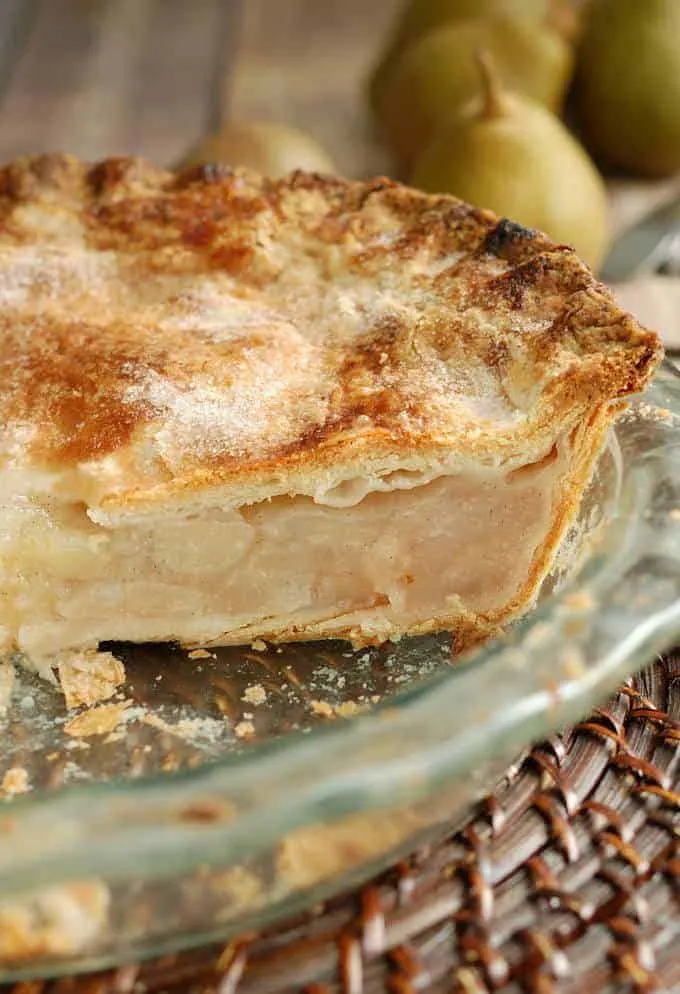
If you’re a sourdough-bread baker, you know how painful it is to throw away a whole cup of hard-earned yeasty goodness every time you need to replenish your starter. This recipe is a great way to use that discard to make an incredible pie crust.
If you don’t already have one, I can show you how to make a sourdough starter and how to feed a sourdough starter.
Why Sourdough Pie Crust is so good:
- Sourdough discard does amazing things for the flavor and texture of a basic flaky pie dough.
- Sourdough starter is acidic. Acidic ingredients tenderize gluten. Sourdough discard helps keep this pie crust tender.
- As the crust bakes there is a tiny bit of lift from the natural yeast in the sourdough starter. I find that lift helps make the crust even flakier as the air pockets in the dough poof up a bit and separate the layers of dough.
- Sourdough Pie Crust smells amazing as it’s baking in the oven. The yeasty, bready smell is totally tempting.
Ingredients
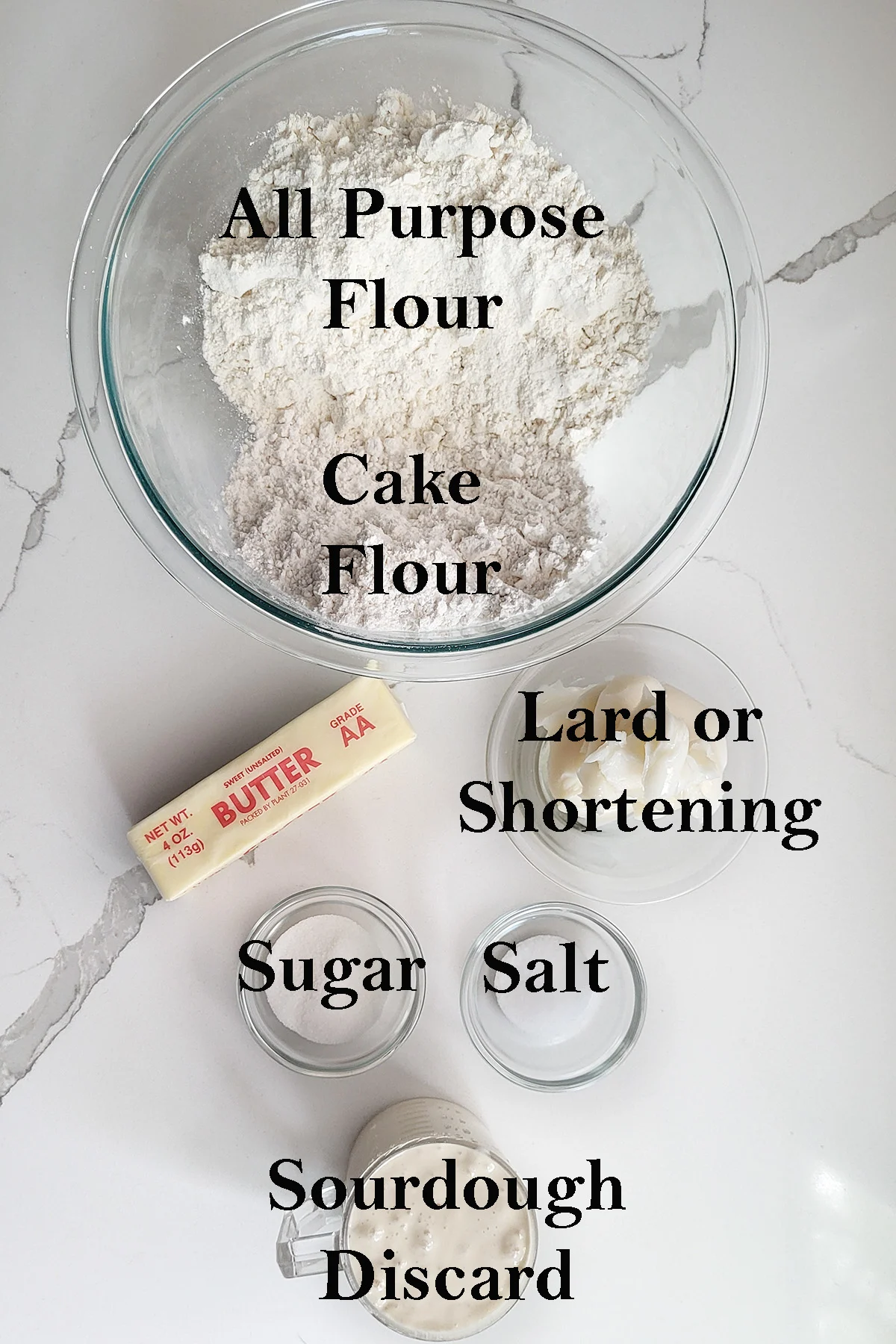
Ingredient Notes
- Flour – This recipe uses a mixture of all purpose and cake flour. All purpose flour will give the dough enough structure so it can hold the flaky texture and a small proportion of cake flour will help keep it tender. In a pinch, you can use bleached AP flour and get good results.
- Fat – I like to use a mixture of half vegetable shortening and half butter. The vegetable shortening has a higher melting point and keeps the crust from slumping as it bakes. The butter is, well, delicious! You can use all vegetable shortening for a vegan pie crust or all butter if that’s your preference. I sometimes use leaf lard in my pie crust. If you have that available you can use it in place of the shortening.
- Sourdough Discard – This recipe was developed using a 100% hydration starter. That means the starter is fed with equal weights of starter, flour and water. You may need to adjust the amount of starter in the recipe based on the moisture level of your starter.
How to make Sourdough Pie Crust
Here’s what the recipe process looks like at each stage. Refer to the recipe card below for measurements and exact instructions.
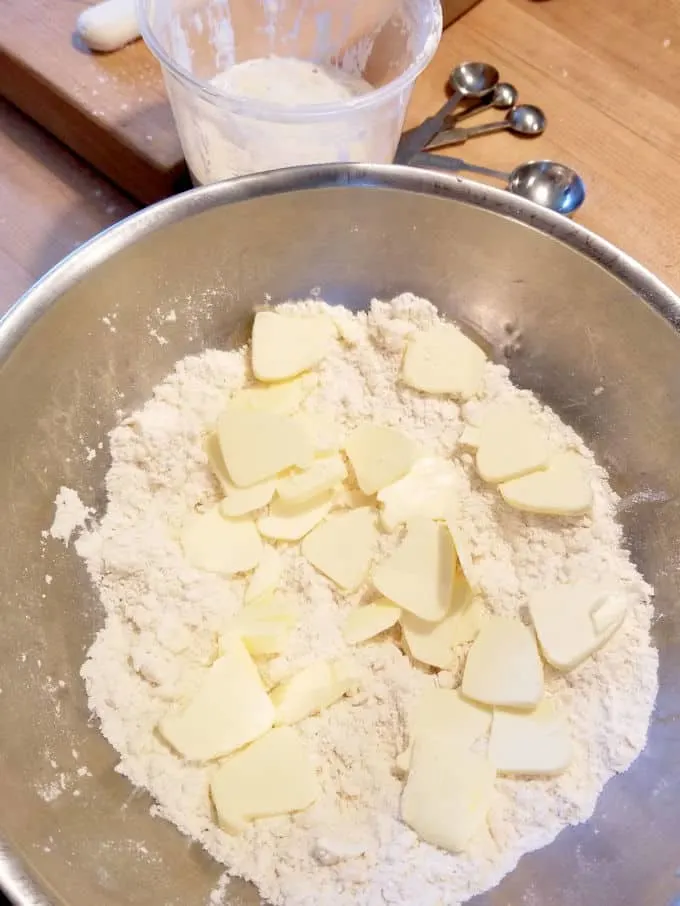
- Mix the fat in two stages.
- First mix in the shortening, then toss in the slices of cold butter.
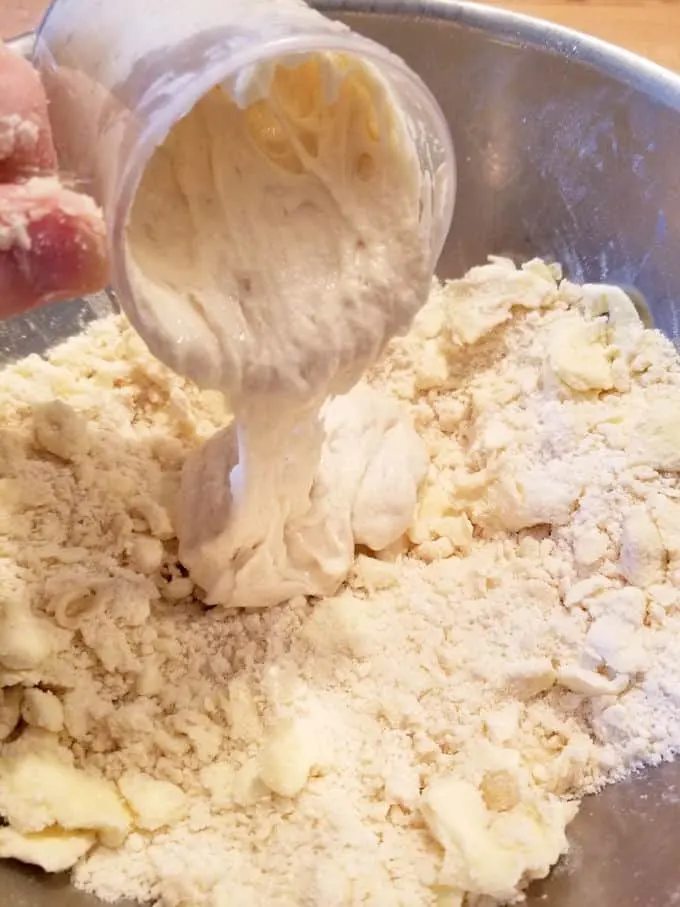
- Add the sourdough discard to the flour/butter mixture.
- There is no other water in the crust other than the water in the starter.
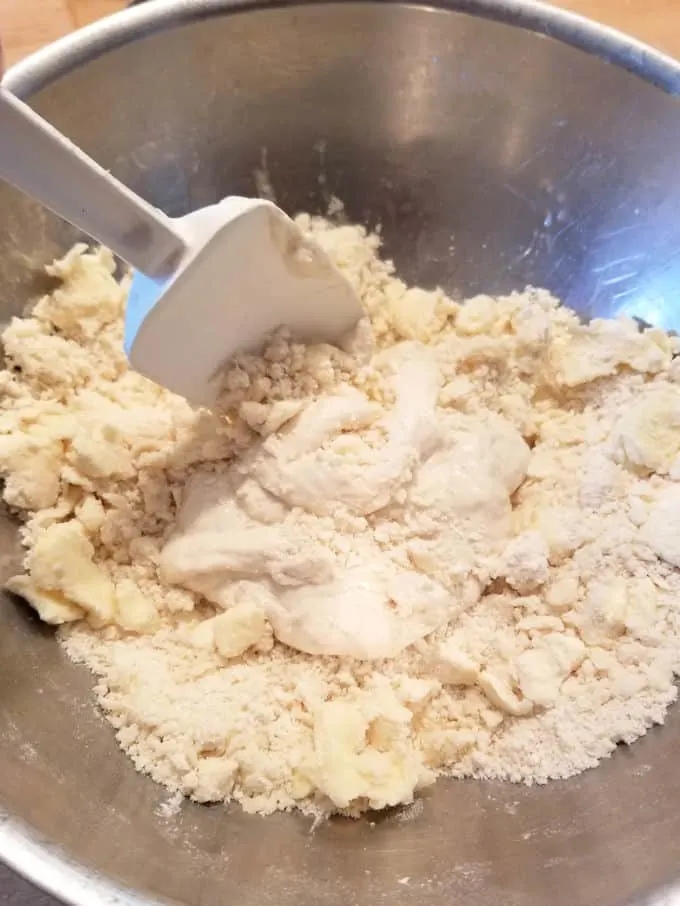
- Mix with a spatula until the dough starts to come together.
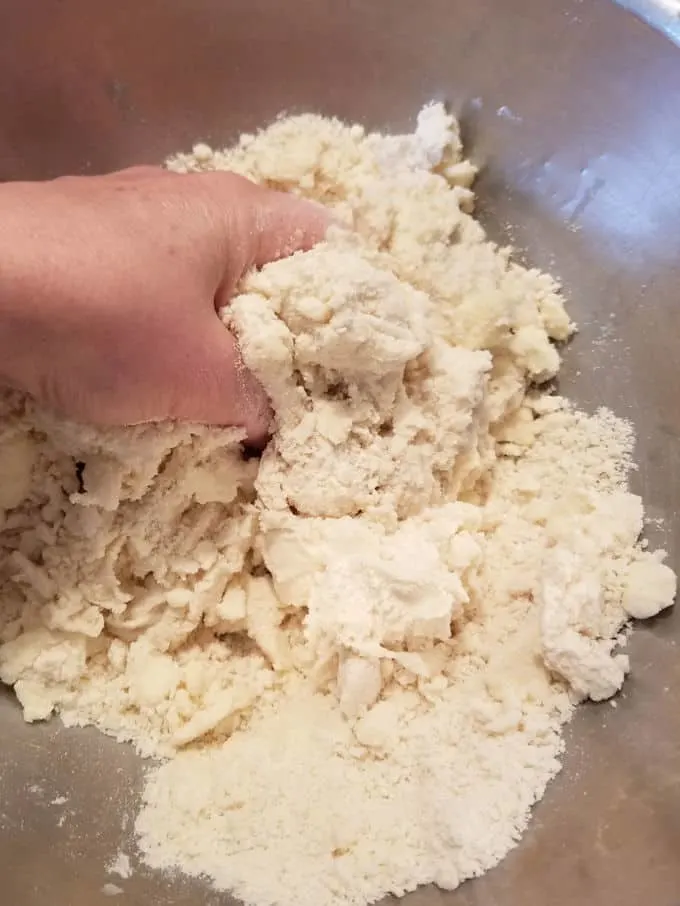
- Use your hands to gather the dough together until the all the loose flour is mixed in.

- Gather the dough into a “shaggy” mass.
- Do not knead, just gently gather the dough together.
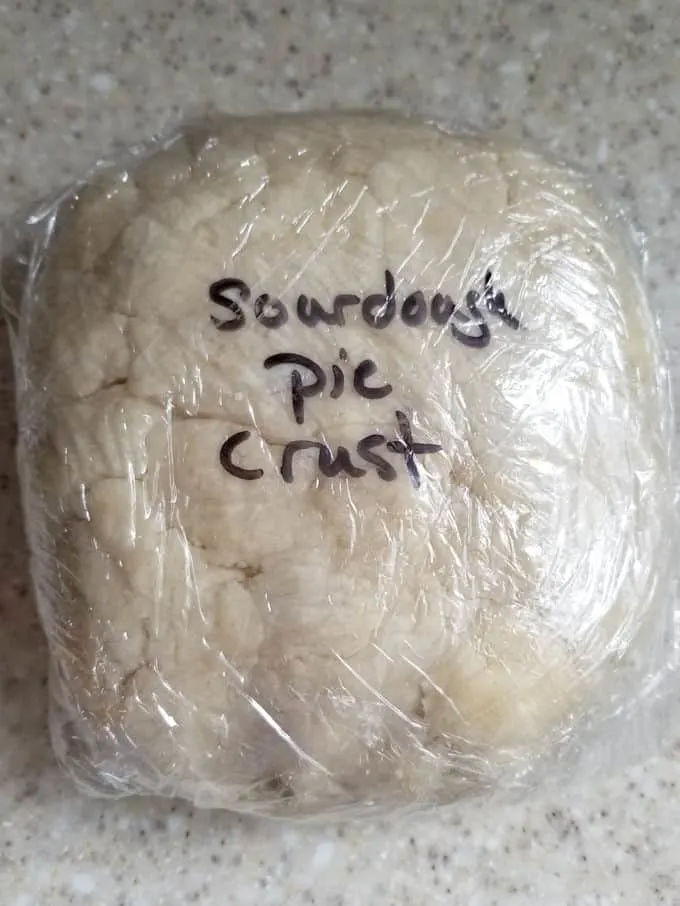
- Wrap the dough and refrigerate for several hours or over night before rolling.
- This will give the flour time to absorb the water in the dough.
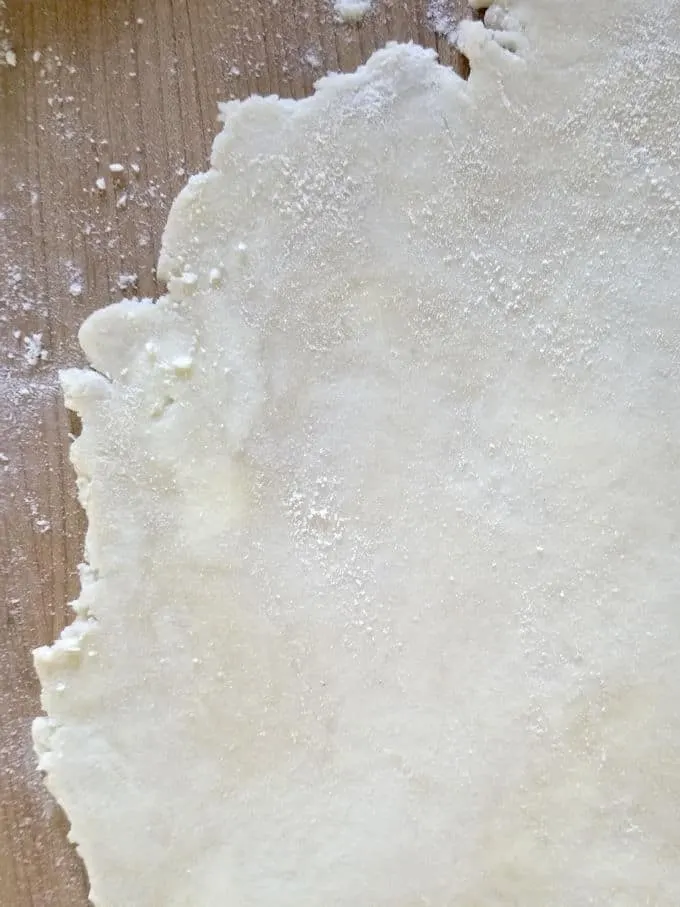
- The bits of butter and a little lift from the starter will help form the flakes.
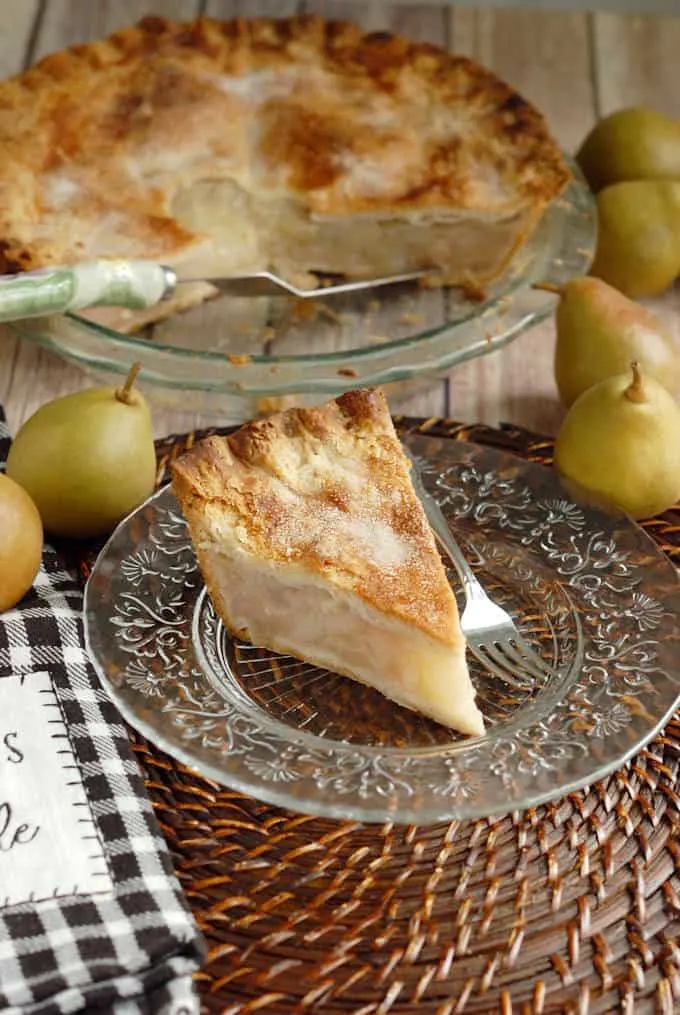
I used Sourdough Pie Crust to make a sensational Vanilla Pear Pie and the best Chicken Pot Pie ever.
I know you hate to throw away that sourdough discard. Check out these recipes that use sourdough discard.
If you love this recipe as much as I do, I’d really appreciate a star rating and a quick comment. Ratings and comments help my recipes show in search results. Thanks!
Sourdough Pie Crust
Ingredients
- 7 ½ oz all purpose flour (1 ½ cups (see note))
- 3 ½ oz cake flour (⅔ cup)
- 1 teaspoon salt
- 1 tablespoon granulated sugar
- 4 oz vegetable shortening (or leaf lard, cold)
- 4 oz unsalted butter (very cold and sliced into ¼" thin slices)
- 8 oz sourdough discard (1 cup (100% hydration))
Instructions
- Combine 7 ½ oz all purpose flour, 3 ½ oz cake flour, 1 teaspoon salt and 1 tablespoon granulated sugar. Whisk together to mix the ingredients evenly.
- Using your fingers, 4 oz vegetable shortening into the flour mixture until it resembles coarse corn meal. Using your fingers, toss 4 oz unsalted butter into the flour mixture. Allow the slices of butter to break up into slightly smaller pieces into the flour. Work quickly so the butter doesn't get warm. Don't break the butter down completely. There should be some large flakes remaining.
- Pour 8 oz sourdough discard onto the flour all at once and toss to combine. Gently press the dough just until it comes together. It will look a little dry in spots. The moisture will redistribute in the dough as it rests.
- Wrap the dough and refrigerate for at least 2-3 hours before using.
Would you like to save this recipe?
As an Amazon Associate and member of other affiliate programs, I earn from qualifying purchases.

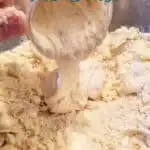

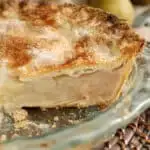




In the ingredient list, you have 3 oz. lard or shortening but in the instructions it says 4 oz.
Ooops, thanks for pointing out the typo. It’s been fixed.
I was looking for a pie crust recipe using corn meal and ran across yours. Poking a little farther I ran across your recipe for sourdough pie crust. I decided to try combining them. I substituted the cake flour with blue corn meal I ground in my grain mill. I replaced the sugar with honey and added a teaspoon of cider vinegar. After mixing the dough I did a frisagge to bring the dough together.
I rolled it out and used it for a turkey pot pie. The flavor and texture were terrific. My wife loved the flavor.
I have always wanted to try leaf lard. Is there a supplier/brand you recommend? I tried using super market lard once but wound up throwing it and the pie away. It was awful!
Looking forward to trying some of your other recipes. Thanks for sharing!
I get my leaf lard from a friend. Her cousin is a butcher. If you have any real butcher shops in your area check with them. You can stock up. It freezes very well.
Thank you for this wonderful recipe! It a go to in my life. I always have some on hand in the fridge, which makes throwing together a quiche, pot pie, or fruit tart a breeze!
Thanks, Bethany. I always have some in my freezer too. It’s quick to put together when you need to feed your starter.